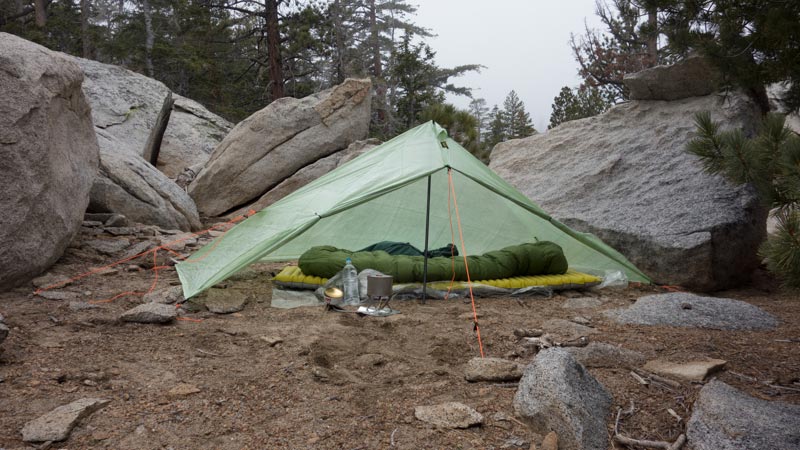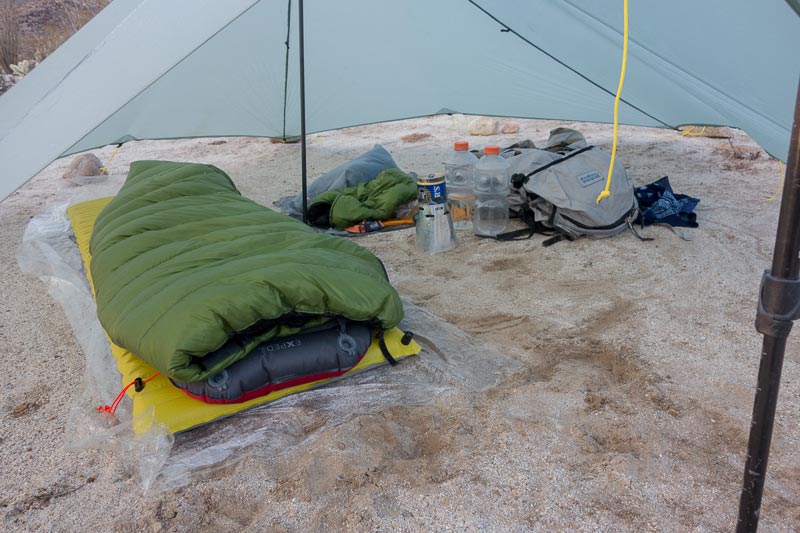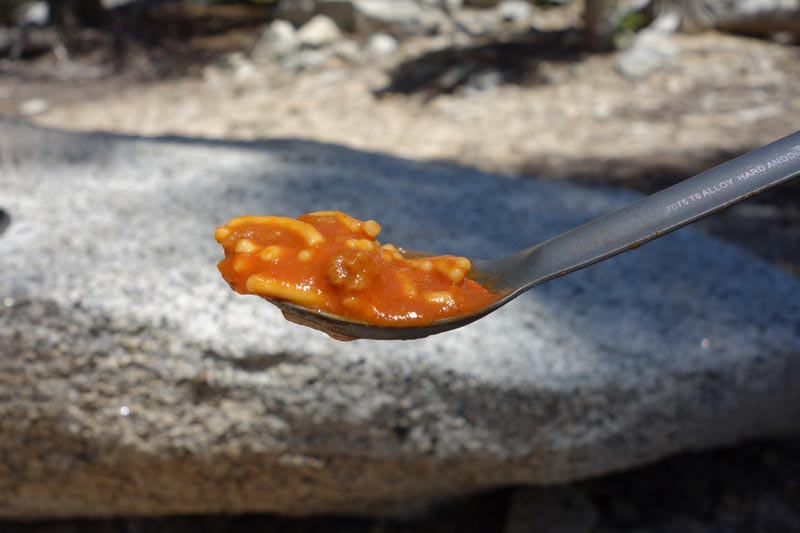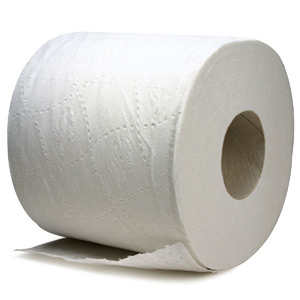It isn’t unusual for people to experience difficulty getting a good night’s sleep in the backcountry. This affliction impacts backpackers, car campers, RV and travel trailer enthusiasts. Often when seeking advice for solutions, those trying to help usually focus on gear.
My first inclination, when asked my opinion, is to answer with, “Lie down, close your eyes, and go to sleep.” This is what I do nearly every night.
However, it really isn’t this simple.
DISCLAIMER
I am not a doctor, a counselor, a trainer, nor a sleep expert. I have no training in any field that would relate to sleep. Each of us is different and what works for me may not work for you. If you have some medical condition that prevents you from getting a good night’s sleep my observations may not help. But I do have over 60 years of consistently enjoying a quality night’s sleep. This includes many years where I was required to work consecutive weeks of flying coast to coast and not succumbing to that nemesis of travelers: jet lag.
THE 3 R’s ARE THE SECRET
There is a famous saying about successful real estate investing. That is, there are only 3 things you need to know about real estate to become a successful investor: Location, Location, and Location.
When it comes to getting a good night’s sleep, for the most part, there are only 3 things you need to focus on: Routine, Routine, and Routine.
Along with these 3 R’s and a few techniques my approach may help those who are seeking the elusive good night’s sleep in the backcountry or anywhere else. And the newest piece of gear or equipment isn’t the solution. Sorry to burst the backpacking gear geeks’ bubble.
THE IMPORTANCE OF SLEEP
Without a good night’s sleep we can’t be most effective at our jobs, our hobbies, and especially backpacking. For the backpacker, sleep deprivation can lead to confusion, getting lost, serious injury or even death. The backpacker has to be alert and physically well balanced. That means a quality night’s sleep.
IS THE PATH TO SUCCESS MODELING THOSE WHO ARE SUCCESSFUL?
When it comes to all things backpacking, you might think the most useful source of information and technique would be the Thru Hiker. Those people who hike the long trails of the world, spending months on end walking and sleeping in the wilderness. What they do must certainly be the key to a good night’s sleep.
The problem of applying what the thru hiker does, compared to the average backpacker, comes down to this: Trail Hardened. Thru Hikers, after a few weeks, become trail hardened. They hike from dawn to dusk. They can shrug off minor injuries and discomfort. They can sleep almost anywhere. The average backpacker can’t.
So don’t plan on reading some Thru Hiker’s journal and emulating what he does. It isn’t applicable to you unless you are planning your own multi-month thru hike.
ROUTINE: REFINING THE SLEEP HABIT
If you can’t get a good night’s sleep at home, you won’t get one on the trail, in a camper, or in a hotel. The foundation to consistently wonderful sleep starts at home. You must master this first.
How much?
The first step is to figure out how much sleep you actually need. For most people it is between 7 and 8 hours, but some need less and others more. As we get older, some do well with 6. My number is 7. 8 doesn’t provide any advantage. 6 is okay, but not optimum. Several consecutive nights of 6 hours slowly reduces my effectiveness during waking hours. I am fine with 6 hours of quality sleep for a few days when at home, but it doesn’t work well when I am hiking several days from dawn to dusk. So I always shoot for 7 hours at home, on the trail, camping or when traveling. If I have a tight schedule, I’ll use an alarm clock to make sure I don’t oversleep and normally will wake up a few minutes before the alarm. Now that I am retired, an alarm clock is of no use to me. I automatically wake up around 7 hours after I go to bed.
When?
Truly, the most important factor to a good night’s sleep is a schedule. You need to go to bed at the same time every night and get up at the same time every day. Your internal clock will calibrate to the accuracy of a fine Swiss watch. When I was working, many weeks I would fly from California to the East Coast on Monday and fly home on Friday. This worked even when I needed to spend eight consecutive weeks on the East Coast, returning home for each weekend. While on the East coast I would stick to West Coast time for my sleeping schedule.
Go to bed: 10:00 pm Pacific Time = 1:00 AM Eastern Time
Wake up: 5:00 am Pacific Time = 8:00 am Eastern Time
When on the East Coast, waking up at 8:00 am often wouldn’t fit into my work schedule. So I would need to spend at least a week in advance changing my schedule. I would start “practicing” by going to bed at 9:00 pm at home and getting up at 4:00 am. It usually takes me a week to effectively adapt to a one hour shift.
This the same approach that works best for backpacking and camping trips: go to bed and wake up at the same time each day for optimum performance and a good night’s sleep.
How To Do It?
The Wandering Mind
You’re tired, maybe exhausted from a strenuous day, but you can’t fall asleep. More than likely you didn’t clear your mind. At home, turn off your phone’s email notifications at least 3 hours before bedtime. Notify your co-workers and boss you don’t “do email” after a certain time. Better yet, don’t deal with emails at all after work hours. Learn (or re-learn) how to live your own life untethered to technology so you can advance to that place where when you are backpacking, you can just leave your phone in your car and deal with nature one-on-one. You don’t need a phone to backpack. All you need is a compass and map, along with the ability to use them.
When at home, plan your next day’s activities at the end of your work day or several hours before your bedtime. When backpacking, plan the next day’s itinerary and solve any logistics in the late afternoon. Clear your mind hours before you go to bed.
When at home, turn of any electronic gadgets at least an hour before you go to bed. If you take electronic gadgets backpacking, re-evaluate the need.
Things That Go Bump in the Night
If you worry about being attacked by zombies or attacked by wild animals you will probably have problems getting to sleep. Overcoming this isn’t easy for many people. First, study real and imagined threats. In most areas, there is no rational reason to fear attack. Recognize in advance that knowledge often isn’t the only solution. Spending enough time outdoors without incident will reassure you that threats are imaginary and when you spend enough time sleeping under the stars you will learn to brush off any irrational fears.
Sore Muscles and Minor Pain
The best strategy is to get into hiking shape before you go backpacking. If you exercise every day and maintain a good level of physical fitness you will minimize potential problems. But let’s face it, you can’t hike 25 miles every day with a backpack and simulate the elevation ups and downs. You need to have realistic expectations for each trip and don’t push so hard to risk injury.
To avoid muscle cramps that can prevent a good night’s sleep, stay hydrated and replace lost body salts and minerals during the day as you hike, so you don’t develop a large deficiency or imbalance before you go to bed.
Often Advil or a similar over the counter pain killer will allow you to sleep well in spite of minor muscle fatigue.
Backpacking Gear for a Good Night’s Sleep
There is no magic shelter, sleeping pad, sleeping bag, or pillow that will ensure a good sleep.
Site Selection: One critical factor is site selection. Learn how to select a level site that will minimize the effects of wind, rain, snow, sleet, flooding, insects, roaming animals and rodents. This takes practice. I won’t go into details, much has been written by others so do your own research.
 Over the years, I have learned how to visually select a nice sheltered and level site. Sometimes I will actually lie down for a few minutes to ensure the site is actually level. Many side sleepers, me included, often choose a spot that has a small indentation or depression for their hips. After a particularly strenuous day I sometimes will slightly elevate my feet with my pack to help with blood flow.
Over the years, I have learned how to visually select a nice sheltered and level site. Sometimes I will actually lie down for a few minutes to ensure the site is actually level. Many side sleepers, me included, often choose a spot that has a small indentation or depression for their hips. After a particularly strenuous day I sometimes will slightly elevate my feet with my pack to help with blood flow.
Don’t pick a site that is rock hard, which most designated camping sites are due to frequent use by hikers. Of course a better reason for skipping these designated sites is to find your own secluded and peaceful campsite.
Sleeping Pad: When I was young, I didn’t use a sleeping pad. I simply laid my sleeping bag out on top of a groundsheet. But I was young and fit and slept at home on a thin hard mattress.
Over time, because of a “wife-driven” switch to a softer mattress at home, I began using thin foam pads for backpacking. Usually the first couple of nights outdoors I would toss and turn due to pressure points on my hips and upper body. This would pass after a few days as I got used to sleeping on the pad. Later, I learned that sleeping on my foam pad at home on the floor for a couple nights prior to a backpacking trip would condition my body and I would be able to sleep without interruption or soreness starting on the first night outdoors.
But alas, during the past 50 years of backpacking I have gotten much older and a little softer. Over the past five years or so I have started using an extremely lightweight air mattress designed for backpackers that is fairly durable and provides some built in ground insulation, which leads to a discussion of R-values.
Aside from cushioning, a quality sleeping pad must match the conditions. In winter, one needs good insulation under the sleeping bag to stay warm and comfortable. When people tell me they cannot stay warm at night, the first thing I recommend is making sure their sleeping pad has enough insulation, as a warmer sleeping bag will not necessary solve the issue. For more information on sleeping pad R-values, Google is your friend.
There is no universal best sleeping pad or mattress. You need to try and match the characteristics of your pad to what you are used to at home. If a hiker is overweight and out of shape, they will probably have more difficulty in finding a lightweight pad that will work for them.
Staying Warm: When you select a sleeping bag (or quilt), choose one that will keep you warm at the lowest historic average temperature you expect to encounter. Many people will select a higher rated temperature bag or quilt (lighter weight) and plan to supplement that with clothing to stay warm – all in an effort to save a few ounces of weight foolishly. If the temperature dips below what is expected, they will become cold. However, if they expected 20F and took a 20F rated bag, they can stay warm if the temperature drops lower by wearing extra clothing.
One thing about temperature ratings… they usually mean nothing and are just marketing ploys. There is a European rating system called “EN Standards” that uses standardized testing procedures to calculate temperature ratings, this is the best method to pick a sleeping bag. But not all manufacturers use this… some will just measure how much loft a bag has, and then guestimate the rating, and then advertise that guess as fact. Even if you find a sleeping bag that has been tested using the EN Standards, it does not mean it will work for you at that low temperatute. You need to find out if you are “average,” that is, will a EN rated 20F sleeping bag actually keep you warm at 20F. Each of us is different and some sleep colder or warmer than others. It is also important that you understand and learn how to use any cords, straps, cords, snaps and other mechanisms used to cinch up your system or to vent it in warmer temperatures. An EN temperature rating assumes the user knows how to use the sleeping bag.
Pillow: If you use a pillow at home to sleep well, you will probably need one in the backcountry. It needs to be large enough and have similar qualities to what you use at home. I find a simple inflatable pillow weighing a couple ounces works for me, but I need to secure it to my sleeping pad with a cord, because pillows like this tend to slip out from under my head. When I was younger I would place some clothes under my head as a pillow. You will simply have to experiment to figure out what works for you.
When to eat Dinner
Whatever you do at home, assuming it works, is what you should do in the backcountry. How long after you eat and should go to bed and the types of food you should eat is as varied as the number of people on the planet. I can eat less than an hour before going to bed and sleep soundly, as long as I don’t overeat and stuff myself.
What to Eat
There are “experts” that want to guide you on what types of food you should eat and how much. I ignore all of them and eat what I like; my body will crave certain kinds of foods especially on long backpacking trips, and more often than not, it will crave the kind of foods that contain what I need in terms of minerals and vitamins, fats, proteins, carbohydrates, etc. Of course I need to use some common sense… I would prefer to eat ice cream, cake, pies, and candy for every meal, but obviously that would be a dangerous diet for my health. Also, eating freeze-dried or instant foods doesn’t impact how I sleep. I don’t try to eat special foods or consume warm drinks to try and enhance my ability to stay warm through the night – it would only change my routine and possibly interfere with a good night’s sleep – a proper sleeping system will keep me warm.
If you are hiking from dawn to dusk, you will probably burn around 5,000 calories a day, so there really is no bad food unless you have a health problem, so just concentrate on enough calories of food you enjoy.
Other Crap
There is nothing worse than having to get up in the middle of the night, leave your shelter during a snow storm, and take a shit.
You can train your body when to take a crap. With some thought and practice, you can also sleep through most nights without needing to get up and take a leak. Let’s consider my dog, Corky, as an example. Everyone morning around the same time each day we go for a walk. 99% of the time he will take a crap, and usually at about the same point in our walk. We repeat this each afternoon and he takes his second constitutional at about the same time each day. He is predictable. You can do the same thing and develop a Shit Routine.
Every day, whether at home, traveling, or in the backcountry I take my morning dump after a cup of coffee and completing my morning routine.
It really is somewhat amazing to me that many folks have to ask how to get a good night’s sleep. Today whenever people have a problem they rely on social media, google, technology, and stuff for answers instead of good ol’ common sense.








